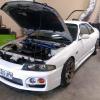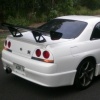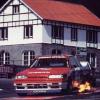Wiring Up Track Only Car Options
Announcements
-
Similar Content
-
Latest Posts
-
By Dose Pipe Sutututu · Posted
Come on lad, missing a few zeros and * 0.6 lol -
GTR R34 combo, black and white, buyer will need to meet at qld transport for transfer of ownership $5500 ono
-
If a second hand 200 series is anything to go by, well, I'm not sure you even need Nissan to close to call it a classic...
-
I never noticed a difference between mine being on or off in terms of sound etc. It isn't on the bonnet like dynamat etc. The main difference I can see it "potentially" doing is keeping some of the engine bay heat off the bonnet on the outside. So really, at most, it might be protecting the paint the tiniest bit. But there are plenty of examples out there where people have removed it, and it doesn't hurt the paint work.
-









Recommended Posts
Create an account or sign in to comment
You need to be a member in order to leave a comment
Create an account
Sign up for a new account in our community. It's easy!
Register a new accountSign in
Already have an account? Sign in here.
Sign In Now